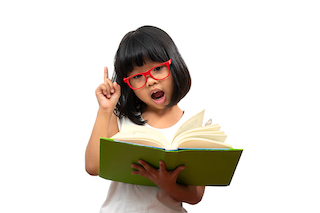 A new study published in the Society for Research in Child Development looked at Perceptual Access Reasoning (PAR) in developing a representational theory of mind.
A new study published in the Society for Research in Child Development looked at Perceptual Access Reasoning (PAR) in developing a representational theory of mind.
“My colleagues and I studied how young children develop a theory of mind, which refers to our common sense understanding that people’s outward behavior is caused by their internal mental states, such as their desires, perceptions, knowledge, memories, and beliefs,” study author William V. Fabricius told us. “Young children have to learn what the different kinds of mental states are, and how they work together to produce people’s behavior. It is so very important for children to understand these connections, because it lays the foundation upon which they learn how to get along with others.”
Researchers proposed a new theory of how children between the ages of two and seven gradually learn about the mind. All of the other current theories hold that children’s understanding is essentially complete by about age five, or even much younger.
“Our theory, called Perceptual Access Reasoning theory, or PAR for short, holds that development of a theory of mind takes much longer, and that four and five-year-olds are only part way there,” Fabricius told us. “According to PAR theory, preschoolers can understand that people see and know things in the present situation, but it takes them until six or seven years of age to understand that someone can have thoughts about things that he or she is not currently perceiving.”
Fabricius realized that the methods that have traditionally been used to assess young children’s theory of mind were flawed, and needed to be corrected so that they could gain a more accurate picture of what children do and do not understand about the mind.
“We did two things,” Fabricius told us. “First, we went back over those studies that had been done between 1983 and 2017 that had focused on what everyone assumed were some of the easiest things for children to understand about the mind, for example, simply understanding that people carry memories with them about what they had experienced a short while ago.”
Researchers used PAR theory to focus what might have been missed in these previous studies. Second, they conducted new studies, specifically targeted to test as many predictions of PAR theory as possible, on 580 four to seven-year-olds. All told, they had findings from 40 studies involving 2,304 children.
“It turns out, that a lot had been missed in the studies between 1983 and 2017,” Fabricius told us. “In those studies, we found consistent evidence, buried and overlooked, that supported PAR theory. Four and 5-year-olds showed all the hallmarks of using perceptual access reasoning.”
For example, Fabricius told us that few understood that when a story character put a toy in one of two boxes and then left for a short while, the character, upon returning, would still know where the toy was. Second, their targeted studies also supported PAR theory. For example, they corrected the traditional methods so as to distinguish between six-year-olds who used perceptual access reasoning, and their age-mates who had progressed to an understanding that people have thoughts about things that they are not currently perceiving. They then asked their kindergarten teachers to identify those children who were adjusting better to school. As predicted, the six-year-olds who were still using PAR were having more difficulty adjusting to school.
“It makes a lot of developmental sense that four and five-year-olds are more like children than like little adults, especially when it comes to understanding something as abstract as the mind,” Fabricius told us. “We hope that our findings will challenge our field to re-examine what we thought we knew about what preschoolers understand about the mind. It is important to do so, because if we expect too much social sophistication from young children who have simply not yet developed that far, we risk setting in motion negative cycles that are hard to reverse.”
Patricia Tomasi is a mom, maternal mental health advocate, journalist, and speaker. She writes regularly for the Huffington Post Canada, focusing primarily on maternal mental health after suffering from severe postpartum anxiety twice. You can find her Huffington Post biography here. Patricia is also a Patient Expert Advisor for the North American-based, Maternal Mental Health Research Collective and is the founder of the online peer support group - Facebook Postpartum Depression & Anxiety Support Group - with over 1500 members worldwide. Blog: www.patriciatomasiblog.wordpress.com
Email: tomasi.patricia@gmail.com